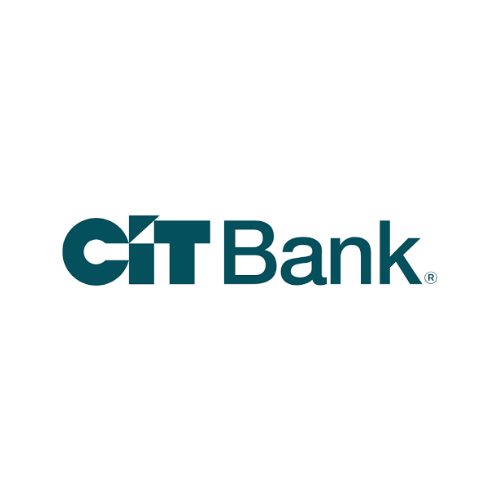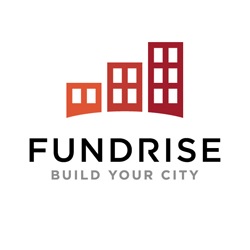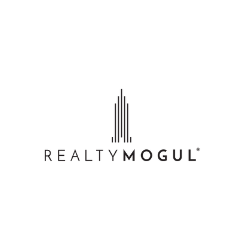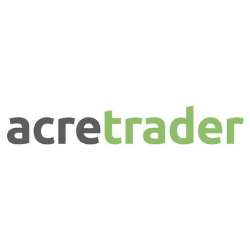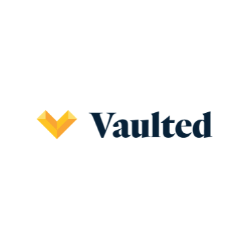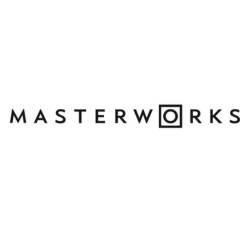25 Income Producing Assets To Grow Your Wealth
Some products in this article are from our partners. Read our Advertiser Discloser.

There are many income-producing assets you can invest in to earn passive income now while building long-term wealth.
Having multiple income streams can reduce stress from your life and let you make money in recessions and bull markets.
Top Income Producing Assets
Here are several ways to invest small amounts of money into a variety of asset classes that can earn long-term profits.
You may already make money from some of the passive income ideas. It’s possible to discover a few other alternative assets that can expand your portfolio.
1. Savings Accounts
Interest-bearing savings accounts might be boring but are an effective low-risk income generating asset. Instead of leaving your money in a high-fee bank account, your cash can earn interest.
Most online banks offer free accounts, so you don’t pay the bank to keep your cash.
CIT Bank offers three different interest-bearing savings options:
- Premier High Yield Savings
- Savings Builder
- Money Market Account
Each of these account options has a $100 initial deposit and have varying interest rates and account perks.
The Savings Builder can be an exciting way to save small amounts of money as a minimum recurring $100 monthly deposit lets your savings earn an interest rate boost.
As bank interest rates are lower than the annual inflation rate, you should invest your long-term investments in assets with higher growth potential.
Savings accounts are a good place to park your cash when researching new investments or plan on accessing within the next few months.
You can read our full review of CIT Bank here.
Why we like it: Your cash earns interest, instant access to large bills or better investments
2. Certificates of Deposit (CDs)
Savings accounts offer easy, penalty-free access to your cash, but the interest rates are lackluster. A bank certificate of deposit can earn a higher yield with low volatility.
The best CDs usually require a minimum $1,000 deposit with a 12-month term (or longer). Most CDs charge an early withdrawal penalty if you tap your cash before the term ends.
CIT Bank offers no-penalty CDs with an 11-month term and a $1,000 minimum opening deposit. Your interest rate can be competitive with similar term traditional CDs that charge early withdrawal fees.
Why we like it: Potential higher interest rates than savings accounts, short investment terms
3. Dividend Stocks

One benefit of investing in stocks is the ability to earn dividends that you can reinvest. In retirement, the dividend income can help pay your bills instead of selling stock.
A dwindling portfolio value means your remaining balance can earn less compound interest.
Not every individual stock pays dividends such as technology companies with plenty of upside growth potential. Well-established businesses like consumer staples, utilities or real estate investment trusts (REITs) are more likely to pay dividends.
If your portfolio holds an S&P 500 index fund, you already earn some dividend income.
Your portfolio value can increase if the index fund share price appreciates long-term.
You can also buy dividend-focused ETFs and mutual funds from most investing apps. These funds tend to hold stocks with the highest dividend payouts in various sectors.
Why we like it: Can earn regular dividend payments, stocks are highly liquid
4. Bond Funds
Another income producing asset is bonds. The best way for most people is to buy investment-grade corporate and government bond index funds. You can buy these funds in your 401k, IRA and taxable brokerage accounts.
Bonds tend to have lower long-term growth potential but are also less volatile than stocks.
As a bondholder, you lend money to a company instead of buying stock shares as a shareholder. If the company goes bankrupt, bondholders get paid before stockholders.
Most retirement planners and robo-advisors recommend that younger investors own some bonds.
For instance, a 20-year-old might hold 90% stocks and 10% bonds. However, your exposure to bonds increases as you age. Before you retire, you may have 60% stocks and 40% bonds.
Why we like it: Less volatile than stocks, potentially higher yields than savings accounts
5. Small Business Bonds
Most corporate bond ETFs only invest in large companies. Small business bonds can also be one of the best income-producing assets for a short-term investment strategy.
Worthy Bonds offers 5.5% fixed annual returns for each note. You can buy Worthy notes in $10 increments with a 36-month term. There are no fees to buy or sell bonds–even when you sell them before the three-year maturity date.
This passive income idea isn’t risk-free, although each Worthy backs each bond with physical collateral to reduce your downside risk. If the borrower defaults, your investment most likely won’t be a total loss.
Why we like it: Fixed 5.5% annual return, no fees and a low minimum investment
6. Crowdfunded Real Estate
Until a few years ago, the only way to invest in real estate with small amounts of money was through real estate stocks and public Real Estate Investment Trusts (REITs). These funds can earn steady dividends, but stock market volatility can impact the share price.
Crowdfunded real estate lets you directly invest in multifamily and commercial real estate with small amounts of money. You can earn annual returns of at least 5% that’s competitive with the average annual S&P 500 stock market with less volatility.
However, most real estate platforms require a minimum 5-year investment period to avoid early withdrawal penalties.
Multi-year investing periods help you earn potentially higher returns than only investing in stocks.
Top real estate crowdfunding platforms to consider:
Groundfloor
Groundfloor takes a different investment approach than most real estate platforms. You invest at least $10 into fixer-uppers in US cities with a 12 to 18 months loan term. The average investment return is 10%, according to Groundfloor.
Each project has a risk rating between A and G. Grade A loans are the least risky offerings and can earn a minimum 5% return.
They introduced a new Groundfloor mobile app available via the Apple App Store and Google Play Store for easier access.
Read our full Groundfloor Review to learn more.
Fundrise
Fundrise invests in multifamily housing and commercial properties across the United States. Investors from all 50 US states can invest with Fundrise even if you earn a small income.
You can start investing with a minimum $500 starter investment. This minimum is one of the lowest for crowdfunded real estate. Investing at least $1,000 lets you choose an advanced investment strategy that will focus on dividend income or long-term growth.
The advanced Fundrise Supplemental Income plan emphasizes dividend income. They offer competitive dividends, which is higher than most public REITs. You also earn some “equity income” when Fundrise sells properties that grow in value.
Aggressive investors may decide to invest in a Long-Term Growth plan. This strategy earns minimal dividends, but the potential annual returns can be above 10% if property values increase.
RealtyMogul
RealtyMogul offers two non-traded REITs with a $5,000 minimum investment. MogulREIT I focuses on debt financing to earn dividends from commercial and multifamily properties. Consider MogulREIT II to only invest in multifamily properties.
Accredited investors will appreciate RealtyMogul for its exclusive offerings. Having a high net worth of at least $1 million or an annual income above $200,000 allows you to invest in individual properties. You can swap investment properties with RealtyMogul using a 1031 Exchange too.
Why we like it: Low investment minimums, steady dividend income
7. Rental Properties
Rental properties are another real estate investment that can be another great income generating asset. You might decide to buy a single-family rental home. A duplex can be good, too, as the monthly rent from one side can offset a vacancy in the other half.
Owning a local rental property can be helpful if you plan on self-managing your unit. Roofstock can help you find real estate in cities across the United States when your local market isn’t a good fit.
You might also use Roofstock to diversify your current rental property portfolio.
Rental properties require a more considerable investment than crowdfunded real estate. However, your potential investment returns can be higher, and you own the entire property.
Why we like it: Local investment options, own physical property, earn monthly income
8. Farmland

Investing in farmland might sound strange, yet it can be one of the best income-producing assets. You don’t have to come from a family of farmers to build wealth from this asset. It’s possible to lend money to farmers who do all of the dirty work.
AcreTrader lets accredited investors buy shares of active farms in the United States. You can make money from annual rent payments the farmer pays and increasing land values.
Some of AcreTrader’s recent land offerings grow these cash crops:
- Almonds
- Corn
- Cotton
- Peanuts
- Soybeans
Each offering lists the potential rate of return and estimated ownership duration. Be aware that this asset can require more cash and a longer investment commitment than other assets. Most offerings have a minimum investment above $15,000 with an ownership period between three and ten years.
Why we like it: Collect annual rental income, invest in multiple crops
9. Precious Metals
One commodity that’s recently catching a lot of attention is precious metals. Specifically, many investors are looking for ways to invest in gold, as it’s been a currency for thousands of years.
Gold has industrial uses as well, including electronics and jewelry. But precious metal bullions such as coins and bars are going to be your most stable investment options. Bullion can also be easier to sell as it’s pure gold than consumer items, as it’s easier to assign a fair value.
Silver, platinum and palladium investments are also popular, but their commodity prices can be more volatile than gold. These metals have many industrial uses in addition to currency. A slump in industry demand can cause these prices to plummet.
Owning tiny positions in several precious metals can diversify your portfolio. As always, perform your due diligence to determine if precious metals can help you build wealth.
There are several low-cost ways you can buy gold investments.
Physical Gold
You can buy physical gold bars and coins, just like buying rental property. Some investors prefer owning assets they can see and keep in their own homes.
The easiest way to buy gold can be using Vaulted. You can purchase fractional shares of gold bars as you only need to invest at least $10. Vaulted stores your gold at the Royal Canadian Mint. The company can mail you gold bars via FedEx as well.
There is a one-time 1.8% fee for all buy and sell transactions. Vaulted also charges a 0.4% annual maintenance fee.
A second way to buy physical gold bullion is by going to a reputable coin dealer. As gold costs approximately $2,000 per ounce, you may not be able to buy an entire bar at once. Coins can also cost more than gold’s current commodity price due to their collectible value.
Gold ETFs
Buying precious metal ETFs with your stock broker is another effortless way to own gold. You can avoid the transaction fees that physical gold vendors charge, but you still pay annual fund fees.
Also, most gold ETFs do not let you own the physical gold like Vaulted offers. Nor do commodity ETFs earn dividends. You can make money from precious metal ETFs when their share prices increase as the commodity price rises and you sell for a profit.
Gold Royalty Companies
Streaming companies are one way to earn recurring income by investing in gold. These companies invest in mining projects and earn royalties from the gold miners. You receive recurring dividends as a shareholder.
Investing in gold royalty companies can be less risky than investing in one mining stock. If that mining project fails, the miner’s share price can tumble and take years to recover. Royalty companies invest in multiple projects across many mining companies to manage risk.
You can buy shares of streaming companies from most investing apps, including M1 Finance.
Why we like it: Alternative to paper currency-based assets, cheaper to buy than real estate
10. Artwork

Masterworks makes it easy to buy collectible artwork from a variety of classic and current artists. You purchase shares of paintings held in a secure vault for several years. The piece will hopefully appreciate so Masterworks can sell it for a profit.
Both accredited and non-accredited investors can invest in art through Masterworks.
Investing in art doesn’t earn dividends but can be an effective stock market alternative. “Blue-chip art” prices from renowned artists can increase in value even as other asset prices decline.
That’s why owning many different types of income-producing assets can help you make money in any economic cycle.
Why we like it: Own partial shares of fine art, invest in multiple art genres
11. Fine Wine
Another unique way to invest $1,000 or more is by owning fine wine. You might consider owning wine if you can hold your bottles for several years or decades. This asset doesn’t earn dividend income and relies on price appreciation.
Wine values can increase in two ways:
- Fine wine takes time. The taste continues to improve as fine wine ages.
- Scarcity factor. Fewer remaining bottles and steady demand boosts market value.
Vinovest lets you buy bottles of investment wine that store in climate-controlled cellars across the world. You can sell your bottle at any time, but waiting a few years can potentially increase your potential return.
12. Peer-to-Peer Lending
Another income producing asset is lending money directly to individuals. You assume more risk but can earn more interest as you avoid the bank. Most peer-to-peer loans have a three-year or five-year repayment term.
Your interest income is taxable like earned income instead of like stock market capital gains. Some companies offer tax-advantaged traditional and Roth IRAs to minimize your tax bill.
Why we like it: Notes cost $25 each and earn monthly interest income
13. Royalties
Owning intellectual property rights to music, movies and trademarks are income generate assets that lets you earn royalty income. You collect a small payment each time someone buys or streams a product you own the usage rights for.
Royalty Exchange is one of the best marketplaces to find open listings. You will likely need to bid in an open auction for rights. Research the potential income to avoid overpaying.
Why we like it: Collect recurring royalties, own usage rights to digital media and trademarks
14. Start a Business
Investing in yourself and monetizing a hobby can be one of the best income-producing assets. Being a business owner has its struggles, but you have full control of the company decisions.
Your potential profit can be higher as you don’t have to split it with countless shareholders.
Some business ideas include:
- Laundromats
- Car washes
- Cleaning service
- Lawn care
- Selling digital ebooks and downloadable items
- Start a restaurant, coffee shop or catering business
- Buy a franchise
- Self-storage facilities
Analyze your local market and see how your skills can meet a need. Starting an online business can also be smart and can have fewer startup costs.
Why we like it: Can make money locally or online, you can use your skills
15. Invest in Private Startups

Not everyone has the time or skill to start their own business. However, you may have the money and vision to invest in rising startups.
Several platforms, including NextSeed, let you fund startups. You might invest in small businesses developing a new mobile app, a boutique hotel or a local restaurant.
Startup investing can be very risky, especially with the current global conditions. You might decide to only invest $100 into each company.
A majority of businesses close before turning a profit. But, if you find “the next big idea,” you can make a nice return, and you have the honor of being one of the first investors.
Why we like it: Share future revenues, less effort than starting your own business.
16. REITs
Real estate investment trusts are an indirect way to invest in real estate because you can invest in real estate without owning it yourself. Instead, you buy shares of a real estate company that owns commercial or residential real estate.
The real estate company owns and manages the properties, while investors earn the profits from monthly income and the capital gains from selling the properties. Investors don’t have to make property decisions; everything is left to the real estate company.
You can choose publicly traded or private REITs, but private REITs are highly illiquid, so don’t invest the money you need soon.
You can purchase REITs on crowdfunding sites like RealtyMogul. They have a $5,000 minimum investment, an annual distribution rate of 6%, and monthly distributions.
Fundrise also has eREIT investments with a minimum investment of $10, which invest in over 20 properties in major cities.
Why we like it: REITs offer the attractive returns real estate provides without the hassle of being a landlord.
17. Short-Term Rentals
Short-term rentals are like real estate rentals, but your focus is on tourists and travelers. Instead of long-term leases, you rent the house out for a few days or weeks at a time. You can do this with a vacation home you own or a single room in your primary residence.
It makes the most sense to rent out rooms you already own rather than purchasing a home strictly for short-term rentals. For example, if you already own a vacation home, you can use it for part of the year and rent it out the other times.
But if you don’t own a second home, you can periodically rent a finished basement, in-law apartment, or room in your home.
Short-term rentals can be more work than long-term rentals because you must clean and keep up the area each time you have new tenants.
The best platform to list short-term rentals on to get the most business is Airbnb. You can list properties, set the rent, and decide when the property is available to rent.
Why we like it: You aren’t stuck in a long-term lease with short-term rentals, giving you more flexibility to make money when you want.
18. Buy Online Businesses
You can invest in online businesses if you don’t want the hassle of owning a brick-and-mortar business. The most profitable options are to buy an existing website or start a print-on-demand service.
Buy Existing Websites
If you buy existing online websites, you have the business model and just need to figure out how to run it. If you have the capital, you can outsource many tasks, making it a passive investment, or you can run the business yourself.
Decide how much time you have to invest in the business to determine if it’s right for you. Also, keep in mind that buying existing companies have many risks. Understanding what you’re buying is essential to determine if you have the capital and resources to make it work.
Print-on-Demand Services
Print-on-demand services allow you to run your own business without owning inventory. Instead, you create the designs for what you sell but hire a print-on-demand service to fulfill the orders when customers place them.
Because you don’t have to carry inventory, there’s much capital required to own the business. However, the downside is the profit margins are lower because you don’t get discounts for buying items in bulk.
Why we like it: You get out of an online business what you put into it, so the sky’s the limit with profits.
19. Sell Digital Products
Creating and selling digital products has its rewards. After creating the products, they become a source of passive income, but you must have the time and talent to create them upfront.
You can create many types of digital products, including courses, ebooks, templates, printables, spreadsheets, and apps.
Consider carefully what you create, paying attention to how much maintenance they’ll need, such as updates or changes. If you create products that don’t require updates or maintenance, you can sell the products for as long as you want to own the business and make profits.
If you aren’t creative or don’t have the time to create the items, you can outsource the creation portion and sell the products for a profit, collecting passive income.
You can sell digital products on sites like Etsy, Teachable, and Amazon.
Why we like it: Selling digital products allows you to be creative. You’ll put in a lot of work upfront but can turn it into a passive income opportunity.
20. Write a Book

Writing a book is a great source of passive income after the hard work of writing it is complete. If you have an idea for a book but don’t have writing skills, you can hire a ghostwriter to do it for you but publish the book in your name.
The most work required when writing a book, besides writing it, is marketing to continue to make profits. You can hire a marketing company or handle it yourself, depending on how much capital you have.
Also, you can publish an eBook or print-on-demand paperback using resources such as Kindle Direct Publishing. Or, you can also self-publish and handle the marketing and pricing yourself. There’s more work involved in handling it yourself, but you may also make higher profits.
The key is finding a topic you can write that isn’t saturated or fill voids in specific niches to capture your target audience.
Why we like it: Books continue making you money long after you write them; you put the hard work in upfront and then profit from it for many years.
21. Tax Liens
When homeowners don’t pay their taxes, the county puts a tax lien on the property. Then, they auction off the tax liens to the highest bidder to get paid. The tax lien then becomes the property of the investor.
Investors can collect on the tax liens, charging interest for each month the liens go unpaid. Since homeowners cannot sell the property or refinance their mortgage with a tax lien, chances are good that they’ll pay it eventually.
Other liens may prevent investors from starting foreclosure proceedings on the property if the homeowner doesn’t pay them in time, so investors take a risk.
Before investing in tax liens, it’s important to do your research, understanding the risks and the likelihood of the homeowner paying the debt without letting the home go through foreclosure.
Why we like it: Tax liens can be a gamble, but when they work, the profits can be high for little work involved.
22. Storage Space
If you have storage space or room in your home that you don’t use, consider renting it as storage. Again, there’s little work involved for you except for ensuring the area has enough room for the tenant’s items.
Neighbor is a great app to advertise your storage space on, as it’s a peer-to-peer rental platform. You advertise your space for rent, and potential tenants view the space and rent it.
All communication and payments go through the Neighbor app, so all you have to do is maintain the space and collect the rent.
Why we like it: Owning unused space is a waste of resources. You can put your space to work, earning profits for very little work.
23. Cars
You might not think of your car as an income-producing asset. Instead, they are usually considered a depreciating asset, but you can change that.
Rent Your Car
You can rent your car on sites like Turo or Getaround. These peer-to-peer car rental sites allow you to advertise your car for rent to peers who can rent it from you privately.
The rental companies install a unit in your car that allows renters to open it from their phone, and it also tracks the whereabouts of your vehicle, so you know it’s safe.
You choose when the car is available, how much you’ll charge, and other terms. Everything goes through the chosen website, including payment, so you don’t have to worry about not getting paid or someone stealing your car.
Advertise on Your Car
If you drive a lot in a populated city, you can get paid to wrap your car in a company’s advertisements.
The pay and length of the ad vary by company and location, but you can make several hundred dollars per campaign to drive your car like you normally do.
Wrapify and Carvertise are two of the most common companies used for car advertisements and are located around the country.
Why we like it: You don’t have to invest any money for this income-producing asset. Instead, you can make money from an asset you own that usually depreciates.
24. Creative Skills
If you have creative skills, you can put them to use to make money. The options are endless, but here are a few common ways people make money using their creative skills.
Sell Stock Photos
If you love to take pictures, consider selling them on sites like Shutterstock or iStockPhoto. You take the picture one time and can sell it as many times as people will buy it.
You choose the price you’ll charge and any other terms, such as giving you credit for the picture if used for commercial purposes.
Sell Items on Etsy
If you have crafting abilities, consider making the products and selling them on Etsy. You can open an Etsy shop for free but will pay a small fee for listing and selling items.
Etsy helps you manage your shop and any customer issues, and all payments go through the platform to ensure you get paid on all orders.
We like it: Using your creative skills is mentally stimulating, and you make money. You don’t have to learn a new skill and can make money doing something you already love.
25. Money Market Accounts
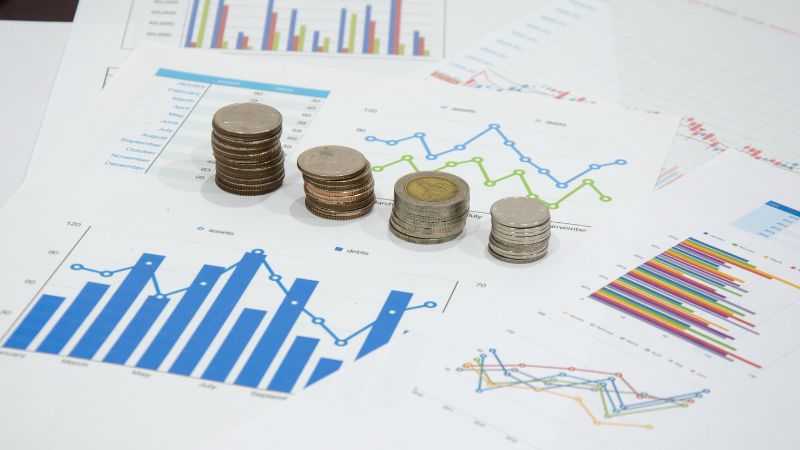
Money market accounts provide the best of both worlds between savings and checking accounts. They pay high-interest rates like online high-yield savings accounts, but you can write up to six checks a month if needed.
CITBank offers a money market account with no monthly maintenance fee and 3x the national interest rates. In addition, you only need $100 to open an account and can transfer funds electronically, check in the mail, or wire.
Why we like it: Money market accounts offer the flexibility of a checking account with the interest rates of a high-yield savings account.
How Do These Assets Compare?
| Asset | Target Return |
| Interest Savings Accounts | 1% – 2% |
| Certificates of Deposits | 3% – 3.5% |
| Dividend Stocks | 8% – 10% |
| Bond Funds | 3% – 5% |
| Small Business Bonds | 5% |
| Crowdfunded Real Estate | 10% – 12% |
| Rental Properties | 6% – 10% |
| Farmland | 8% – 10% |
| Precious Metals | N/A |
| Artwork | N/A |
| Fine Wine | N/A |
| Peer-to-Peer Lending | 4% – 6% |
| Royalties | 5% – 20% |
| Small Business | 15% – 20% |
| Invest in Private Startups | N/A |
| REITs | 4% – 7% |
| Short-Term Rentals | 10% – 20% |
| Buy Online Businesses | N/A |
| Sell Digital Products | N/A |
| Write a Book | N/A |
| Tax Liens | 4% – 9% |
| Storage Space | N/A |
| Cars | N/A |
| Creative Skills | N/A |
| Money Market Accounts | N/A |
Summary
There are numerous income-producing assets that you can own, as you see. You might try adding one new asset class at a time as your budget allows.
Each one diversifies your portfolio and helps you earn investment income for years to come.


